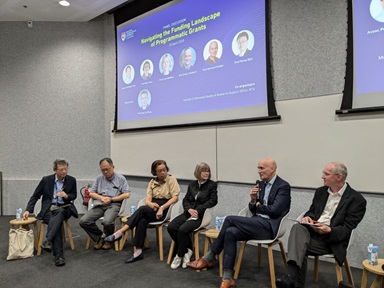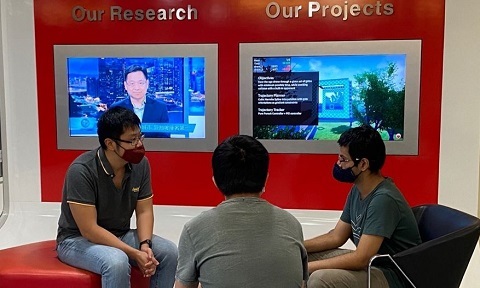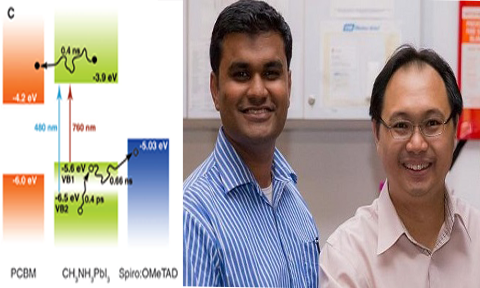2021 MIT Technology Review Innovators Under 35 Asia Pacific
A candid conversation with Nanyang Assistant Professor Chen Yu-Cheng about his research and personal journey

Interview with 2021 MIT Technology Review Young Innovator
Nanyang Asst Prof Chen Yu-Cheng
Interviewed by: Vivek Mohan, Compiled by: Shantanu Raoke |
EEE Graduate Students’ Club, November 2021
In the interview with Nanyang Assistant Prof Chen Yu-Cheng, a prodigious academic who won the 2021 MIT Technology Review Innovators Under 35 Asia Pacific award, he shared some interesting points about his research and academic journey so far. Prof Chen’s research is mainly focused on the development of novel bio-lasers, from molecular, cellular, to tissue level for next generation biomedical applications. Since 2012 he has published more than 60 top journals and proceedings, including Nature Biomedical Engineering, ACS Nano, Advanced Science, Optica. Here are some highlights of the interview:
Prof Chen, how would you describe Bio lasers to people unfamiliar with your field?
Bio lasers are quite similar to the conventional laser. The salient difference is that we use some biological material to form part(s) of the laser component. So instead of using a conventional source like semiconductors or crystals, one can imagine using some tissue cells or some other natural material. Once this is integrated into the other parts of a laser system, it is called a bio laser. The definition is quite broad. As long as some biological material or medium is used in the laser, it fits the definition.

Why is this technology important and how is this innovation pushing the boundaries of this technology that we know today?
We know that conventional lasers are usually very big and the smallest ones are the size of a pen. In the past 10 to 20 years, research in the field of micro to nano lasers has reduced the size to around 10 to 12 microns. However, scientists have pushed to make them even smaller and bio-compatible to leverage the high sharpness and the high intensity features of the laser. So, if we can manage to maintain the same powerful capabilities but have them to be very small, the impact would be huge.
What kinds of materials can be used in bio lasers?
Since they must be bio-compatible, usually polymers that are close to human skin or tissues are used such as hydrogels, silk, protein-based materials, or lipids.
What is the role of AI in this field and what are the applications of this technology in wearables?
AI will certainly help in detection. Lasers provide multi-dimensional and multi-parametric features which can be fed to AI to reveal useful information such as disease detection which will be deployed through wearable technology. So, this is a way for AI students to enter this field of interdisciplinary studies.
These ideas and applications are quite unconventional and unique. How do you come up with them?
As a student, I used my imagination to come up with ideas. The more time I spent in the labs, the more I imagined and came up with ideas and this is something I would encourage my students too. And to be a good researcher, you need to be open-minded to gain as much insights as possible. This allows my team, which comprises students from different academic backgrounds, to come up with different ideas and identify the correct direction for the experimentation.

Prof Chen’s motivational remarks during the IAS Discovery Science Seminar ‘Bio-intelligent Lasers for Healthcare’ co-organised by IAS NTU and the Graduate Students’ Clubs of EEE, SCBE & SBS.
I would like to ask you about your personal journey. You were a student just a few years ago and now you are one of the youngest professors at NTU. You finished your PhD in just two years. How did you manage to do all this?
I was a student till just 3 years ago. My journey is quite special for me. I went to the US to study my PhD in 2015 and I expected it to go on for 4 years, but because my first publication was so fast, my supervisor asked me if I wanted to
graduate next year after I completed my first year. I thought he was joking but he was serious and that is how I graduated the following year. I believe my multi-disciplinary experience from the labs I had joined before my PhD helped a lot because
my PhD was also multi-disciplinary. My PhD involved both my bachelors’ and masters’ topics. The second thing that helped me was paper writing. If you can publish faster, you will graduate sooner and I had practice in writing and publishing
since my undergraduate research career. Lastly, having a good supervisor is essential. A good supervisor is not someone who lets you graduate faster but is the one who is most suitable for you. The tone, the background and the
tempo should match.
About my professorship, that was quite unexpected as I planned to pursue my post-doctoral research elsewhere and applied for a faculty position here at NTU candidly. In fact, my interview trip here was also planned as a fun visit to Singapore to see how it looks like. Luckily, the result was positive.
Do you have any advice for those students who are struggling in their research work?
From my experience, more than 50% of the students have this issue and it is due to the lack of communication between the student and the supervisor. The blame is not all on the students. So, if there is proper communication between the supervisor and the student, a lot of the blockages get cleared up.
Any last message to the student community?
Yes! Learn as much as you can before you are 30 years old. Gather as much knowledge, as many skills, as many inputs as you can before you start working. Try not to worry too much about what you want to do or how much you are earning. Just learn and keep learning. When the time comes to decide, it would be much easier for you to use your inputs and generate useful outputs.
Thank you so much for your time, Prof Chen, it was a pleasure talking to you!
Thank you!






